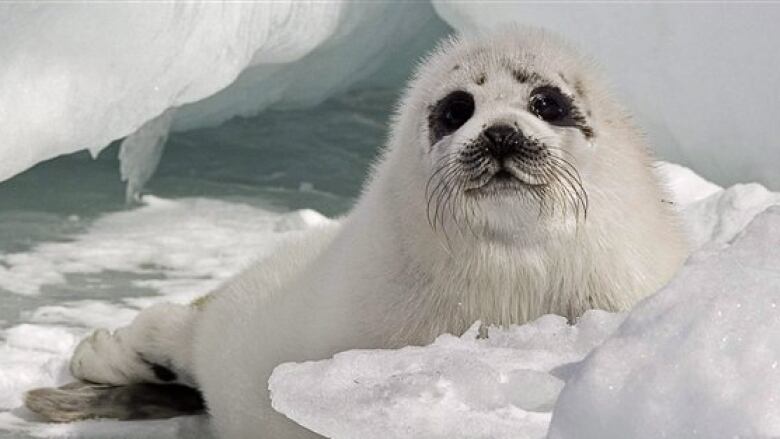Lack of ice means fewer seal pups off the Magdalen Islands this year
Researcher says impact on overall herd limited, but ice patterns over time could be concern

When it's a good ice year, you can sometimes see harp seals lying in a herd that stretches outabout 70kilometreslong and 20 kilometres wide off of the Magdalen Islands.
But this year'swarm winter andlack of ice haveshrunkthe herd to a fraction of its normal size: justless than 10 kilometres long and onlya couple of kilometres wide.
- Lack of ice nixes baby seal tours on the Magdalen Islands
- Environment Canada says spring will be warmer than normal
"We would expect something in the order of about 200,000 pups born in the southern gulf," said MikeHammill,a research scientists with Fisheries and Oceans Canada.
Hammill said the harpseals born in thesouthern Gulf of St.Lawrence make up only 30 per cent of the overall herd, with most of the pups born northeastof Labrador and Newfoundland. He added thatmany harp seals that normally birth in the southern Gulf region are making their way northeast to the other areas.
Higher mortality rate likely
While much of the herd may be migrating, the mortality rate will likely be higher this year for harp seals near the Magdalen Islands. Unlike grey seals that can give birth on shores and islands, harp seals need to have their pups on ice for a month.
"It's initially for lactation, but also it's for resting because otherwise they become tired very quickly and then they drown," Hammill said.
Despite thechallenges this year, the marine mammal researcher said it may not have an impact on the herd.Butseveral years in a row of poor icecould have consequences.
"One bad ice year is not that important because you could say it's mortgaged over several years,"he said. "It's more when you start to run into a lot of these bad ice years that it might be something for concern."
Hammill said 2010 and2011 were bad ice years, 2012 was "OK"and2014 and 2015 were good years.
With files from Radio-Canada












_(720p).jpg)


 OFFICIAL HD MUSIC VIDEO.jpg)
.jpg)



























































































